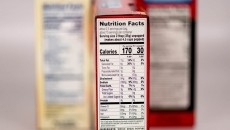New two-in-one test for E. coli and its toxins
Currently food processors have to employ two separate tests because the toxins that E. coli produces, which actually cause food poisoning, can be present in food even after the bacteria is dead and gone. This testing can be time consuming with results taking three to five days to come through.
Double threat
Scientists at the USDA Agricultural Research Service in Albany, California therefore set out to create a test that protects against the double threat of E. coli and its toxins.
Project leader John Mark Carter presented the results of the research this week at the National Meeting of the American Chemical Society (ACS).
Carter explained that the test developed from this work should make it easier for processors to fight the threat from E. coli.
“Finding a few E. coli bacteria in a large sample of ground beef or other food is like looking for a needle in a haystack,” Carter says. “This new method makes the needle much easier to find, compared to standard methods. But improvements in sampling and sensitivity are still needed.”
Although Carter admitted that some refinement is called for he said it has the potential to make a big difference.
Commercialisation
Indeed, Carter and his fellow USDA scientists are working with Luminex Corporation to commercialise the E. coli test and hope that it will be quickly adapted by government agencies involved in food inspection as well as meat processors.
“Our test may be used in meat processing plants to allow in-house testing of products prior to sale,” said Carter. This would reduce the frequency of foodborne illness, reduce product recalls, and enhance public health while reducing annual cost for food testing.”
One of the key tangible advantages highlighted is time saving. Unlike the existing tests for which results can take up to five days to be processed the researchers behind the new two-in-one test say the waiting time is just 24 hours.
Plastic beads
The new test uses microscopic plastic beads containing a fluorescent dye that are coated with antibodies that lock onto proteins or antigens present E. coli and its two main toxins. During the test, the beads are mixed together with ground beef or other food samples and then separated and run through an instrument, identifying beads that have latched onto the E. coli antigens.
Carter and his team are now working on adapting the test to detect other foodborne microbes, such as Salmonella and Listeria.













